By: Anne S.K. Turkos
A recent post on the University of Maryland Alumni Association blog on University of Maryland alumna and University of Iowa faculty member Jennifer Sterling reminded us that visitors to Hornbake Library may not know or remember where “Champions All,” that large turtle statue that resides in the first floor lobby, originated.
As part of the University of Maryland’s year-long 150th anniversary celebration from 2005 to 2006, fifty turtle sculptures—decorated by local artists—were displayed for approximately six months on campus and across the state and greater Washington area. At the end of their six-month reign, all the turtles that were not paid for in full by sponsors were auctioned off to benefit UMD student scholarships, raising $280,000. “Champions All” was part of the silent auction that special evening, and I was determined to capture him for the University Archives. I reached out to family members, friends, and colleagues to gather pledges, so I knew how much I could spend going in. By the time I arrived at the auction, an anonymous bidder had already put down a pretty substantial figure. I upped the bid by $50 and crossed my fingers, hoping that we wouldn’t get into a bidding war. Word got around the room that we wanted “Champions All” for the Archives, and fortunately no one else bid, and we were able to bring him home. Those generous donors who helped me secure this treasure for the Archives are recognized on small plaques on the base of the statue, and I am forever grateful for their support.
At the time of the juried contest to select the artists who would decorate the fifty turtles, Dr. Sterling was a Ph.D. candidate in Physical Culture Studies in the UMD Department of Kinesiology in the School of Public Health. As she noted on the key to the images on “Champions All” that she provided to the Archives, her “design utilized archival images and student photographs to represent the many components of physical culture at the University. From fans to fanatics, curriculum to coaches, traditions to trademarks, and spirit squads to sports clubs, the collage embodies the people and places that have constructed and continue to create Maryland’s sporting history and culture.”
It was an honor and a privilege to assist Dr. Sterling in choosing images from the UMD Archives to incorporate into the display on “Champions All,” and visitors will find many familiar pieces on his shell. Hope you will stop by the Maryland Room in Hornbake Library soon and visit the biggest turtle in the University Archives’ collections!
If you are curious about the other turtles that were part of the Fear the Turtle Sculptures project, there are still a few others left on campus:
- “The Freshman” in the Visitors Center in Turner Hall
- “Hear the Turtle” near the Band Office in the Clarice Smith Performing Arts Center
- “Kertle” and “College Park Arts Exchange” in The Stamp
- “Metalli Terp” near the Dean’s Office in the School of Public Health
- “Mutant Ninja Terrapin” outside the Center for Young Children
- “Turning into Super Terp” in the Xfinity Center near Gate B
- A repainted version of “A Turtle Celebration” outside LeFrak Hall
- “Tuxudo” in the Moxeley Gardens at the Riggs Alumni Center
- “Maryland Pride” at University House
Enjoy your trek!
Works Cited:
- University Archives collection file on the acquisition of “Champions All”
Anne S.K. Turkos is the University Archivist Emerita for the University of Maryland. She has been a part of the staff of the UMD Libraries’ Special Collections and University Archives since January 1985. Before retirement in July 2017, she worked with campus departments and units, student groups, and alumni to transfer, preserve, and make available permanent university records. She continues to support the Archives through her work on special projects and fundraising. Follow Anne on Twitter at @AnneTurkos.

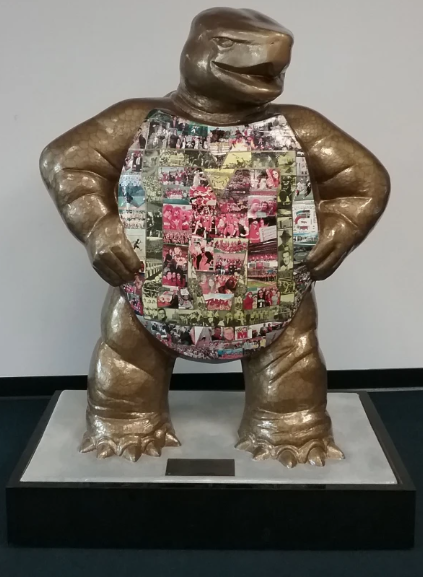
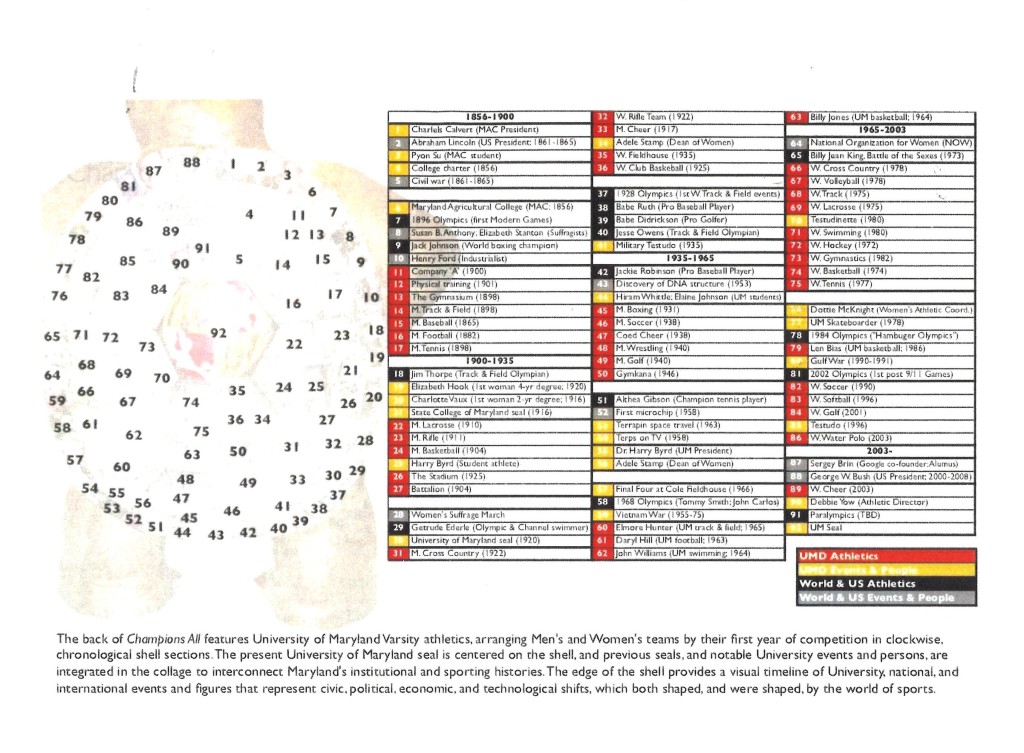
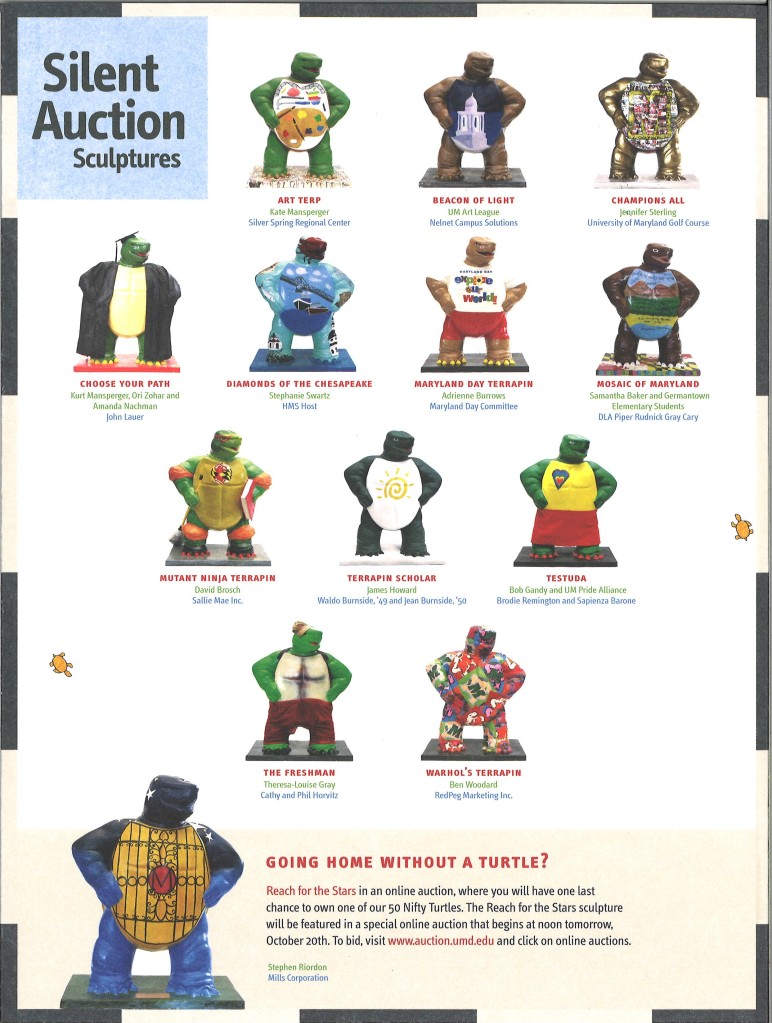
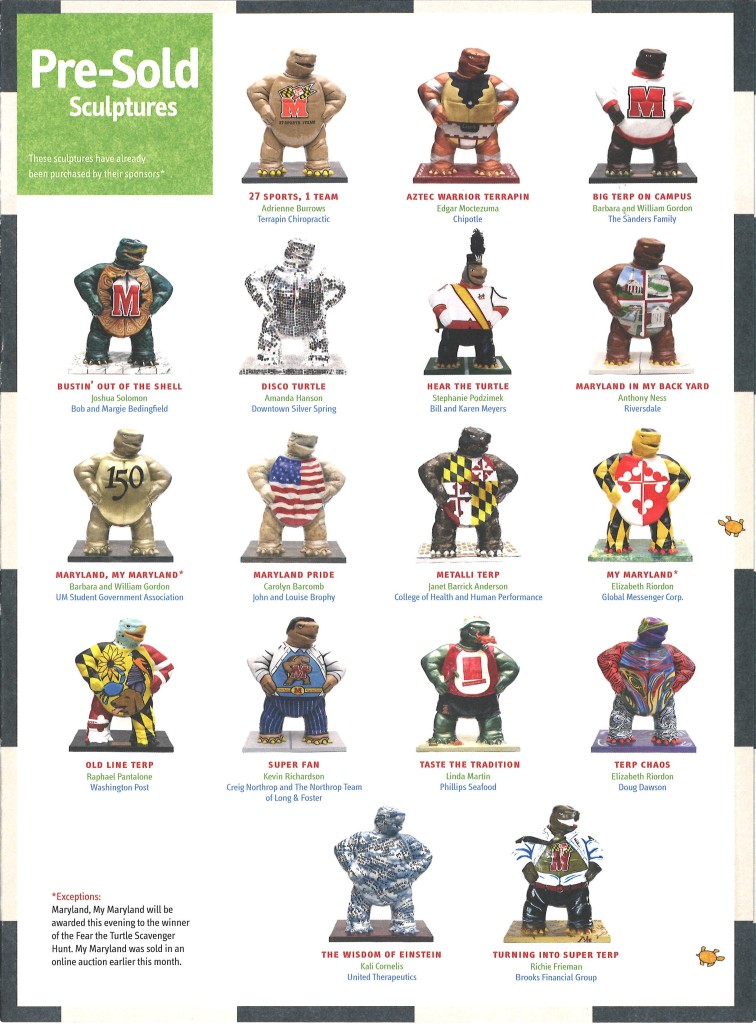
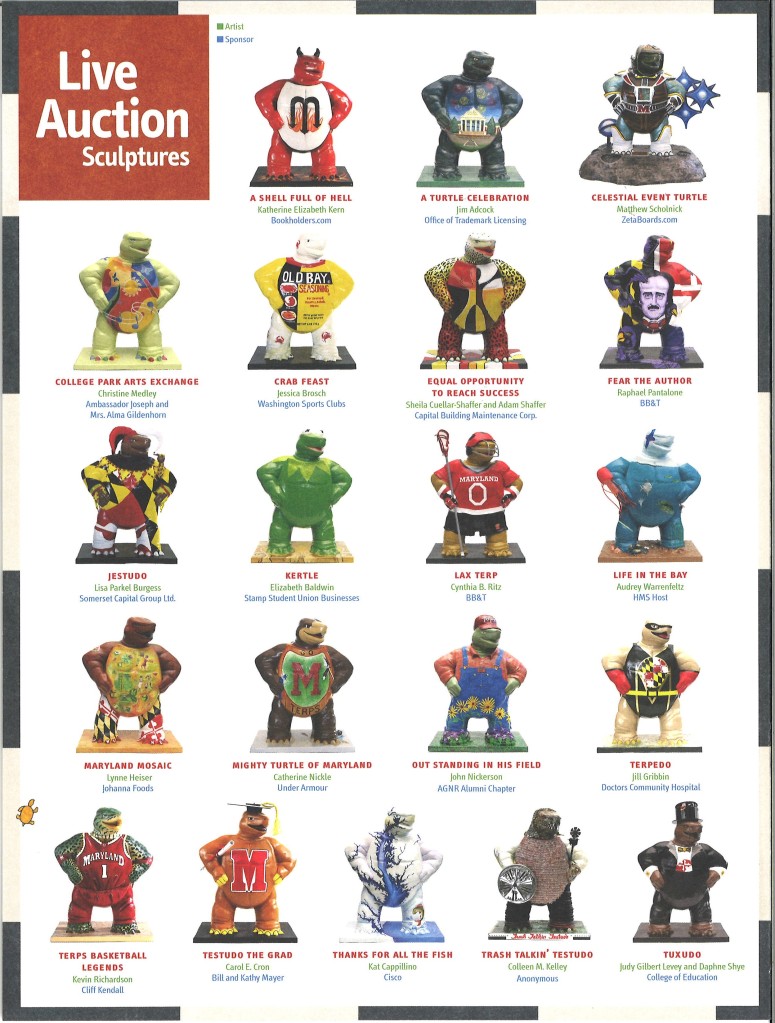





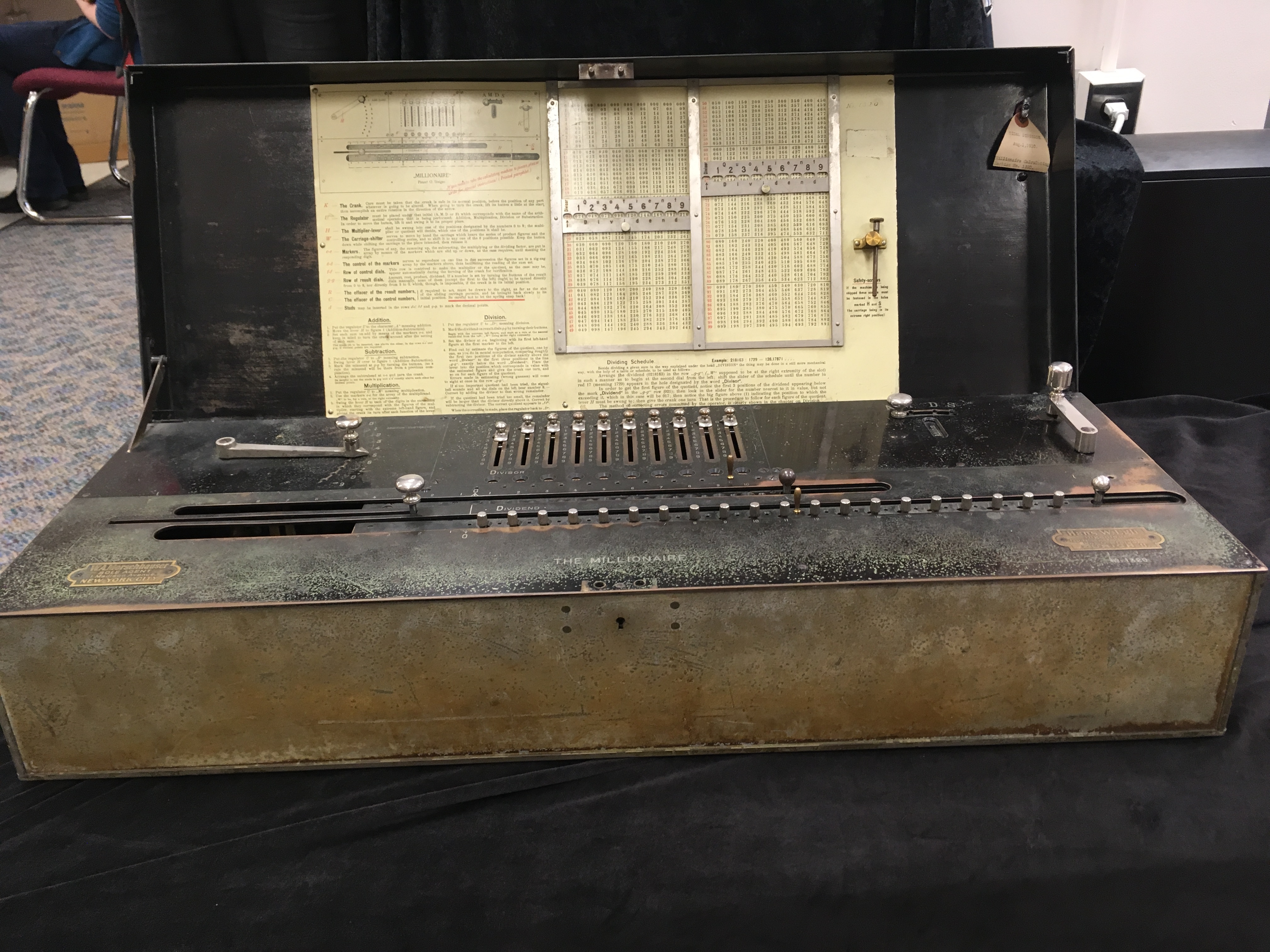 Our new acquisition, this “Millionaire Calculator” from the late 19th century, was donated to the Archives from UMD’s Institute of Physical Science and Technology (IPST).
Our new acquisition, this “Millionaire Calculator” from the late 19th century, was donated to the Archives from UMD’s Institute of Physical Science and Technology (IPST).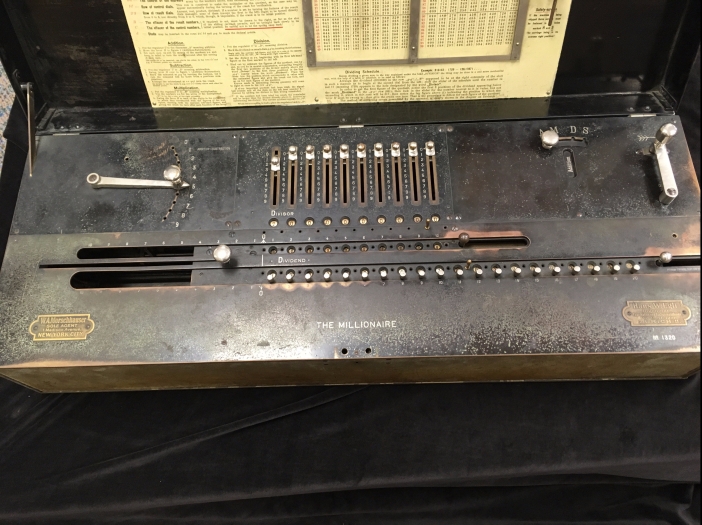 This contraption was the first calculator able to compute multiplication, a huge leap of technological innovation in the field. It could process 8-digit numbers, far more than previous versions.
This contraption was the first calculator able to compute multiplication, a huge leap of technological innovation in the field. It could process 8-digit numbers, far more than previous versions. was used by the US Oceanographic Office, the predecessor to the National Oceanic and Atmospheric Administration (NOAA). Unfortunately, there’s no other clue to why The Millionaire ended up at UMD, so the reason it ended up in the IPST building will probably remain a mystery!
was used by the US Oceanographic Office, the predecessor to the National Oceanic and Atmospheric Administration (NOAA). Unfortunately, there’s no other clue to why The Millionaire ended up at UMD, so the reason it ended up in the IPST building will probably remain a mystery!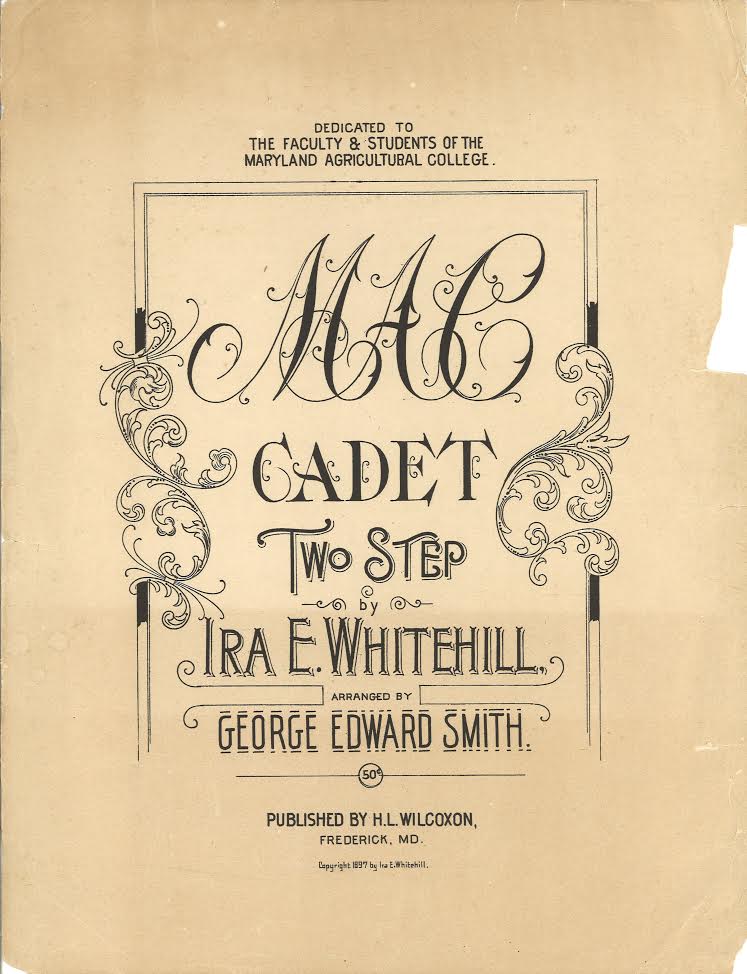 to our collections: a copy of the original song, the “MAC Cadet Two Step.” It is the oldest published UMD song, dating from 1897! The only other copy of it that’s known to exist is at the Library of Congress, and the song is among the oldest pieces of copyrighted music in its collections.
to our collections: a copy of the original song, the “MAC Cadet Two Step.” It is the oldest published UMD song, dating from 1897! The only other copy of it that’s known to exist is at the Library of Congress, and the song is among the oldest pieces of copyrighted music in its collections.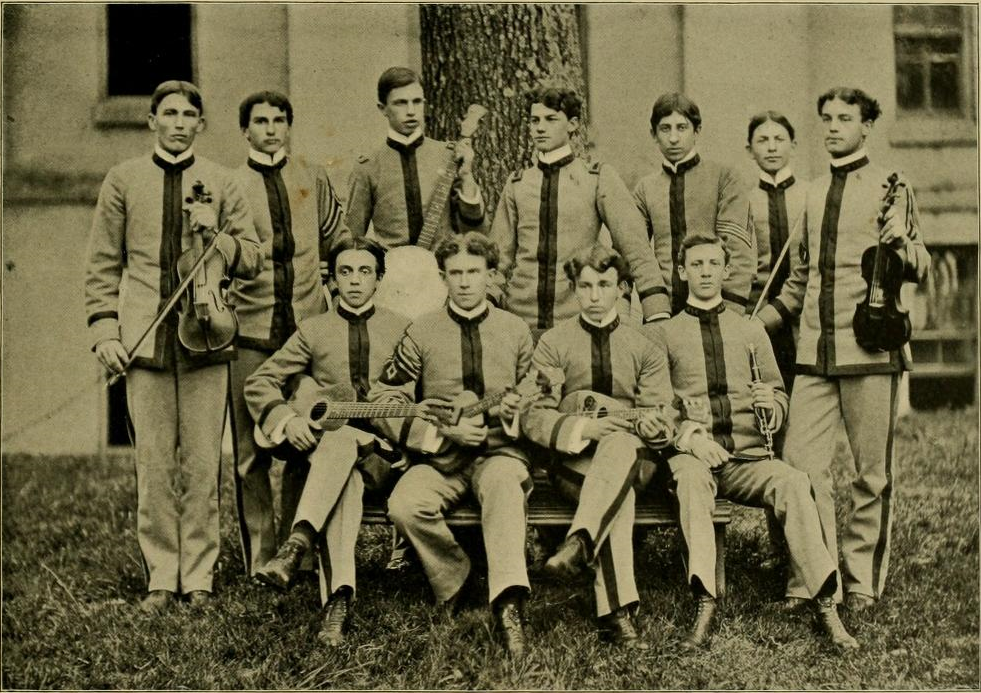

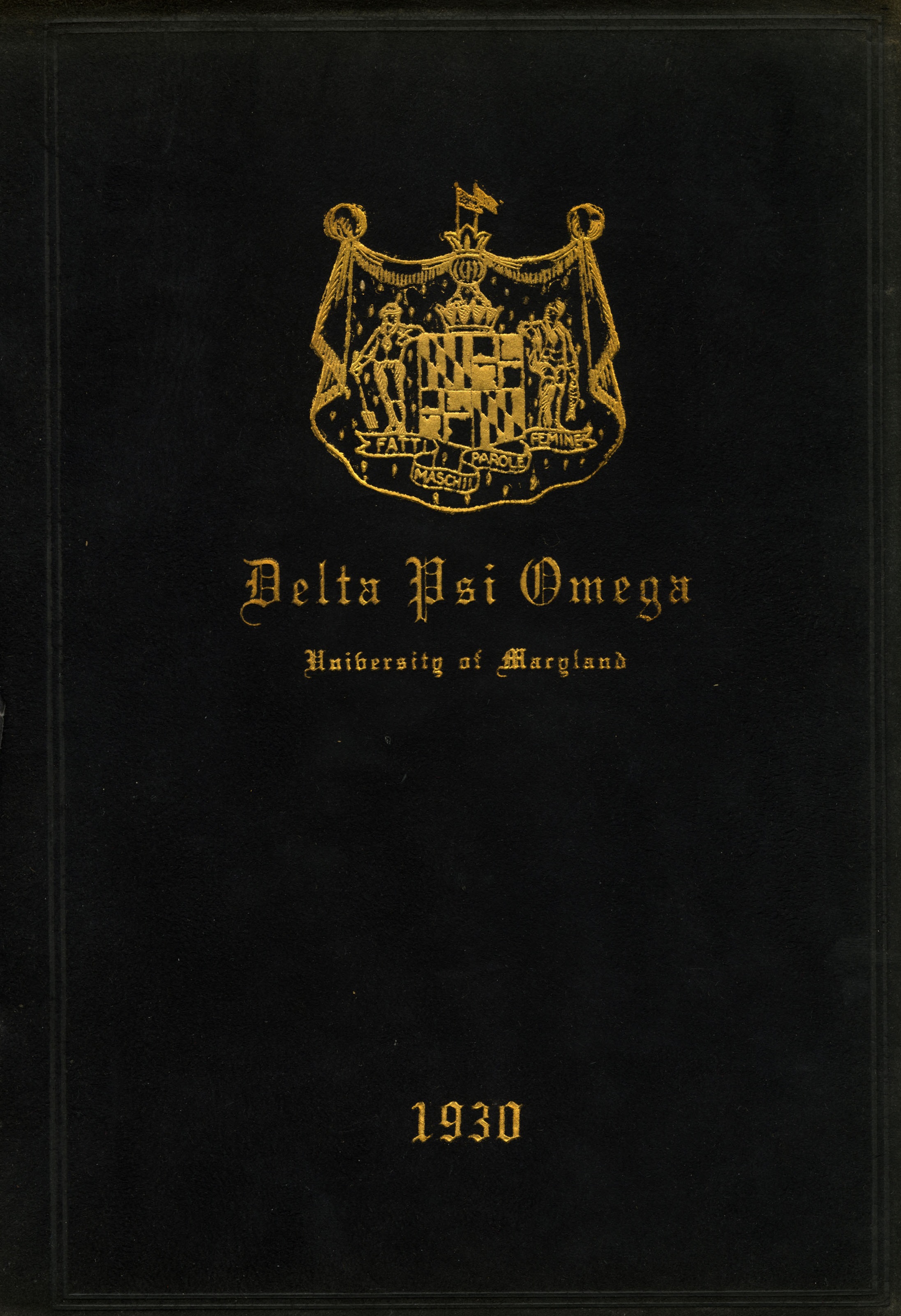 Keeping a record of student life throughout campus history has long been one of the primary missions of the University of Maryland Archives. Part of that goal is the effort to collect as much history and documentation from active student groups as we can, including the numerous Greek organizations on campus. Recently, the children of alumnus Harry Hasslinger, the first president of Alpha Tau Omega at Maryland, donated the original petition to formally establish a chapter of Alpha Tau Omega on Maryland’s campus. The petition was drafted in 1930, and the Epsilon Gamma chapter of ATO was formally established on campus that same year, making it the 11th recognized fraternity at the University of Maryland.
Keeping a record of student life throughout campus history has long been one of the primary missions of the University of Maryland Archives. Part of that goal is the effort to collect as much history and documentation from active student groups as we can, including the numerous Greek organizations on campus. Recently, the children of alumnus Harry Hasslinger, the first president of Alpha Tau Omega at Maryland, donated the original petition to formally establish a chapter of Alpha Tau Omega on Maryland’s campus. The petition was drafted in 1930, and the Epsilon Gamma chapter of ATO was formally established on campus that same year, making it the 11th recognized fraternity at the University of Maryland.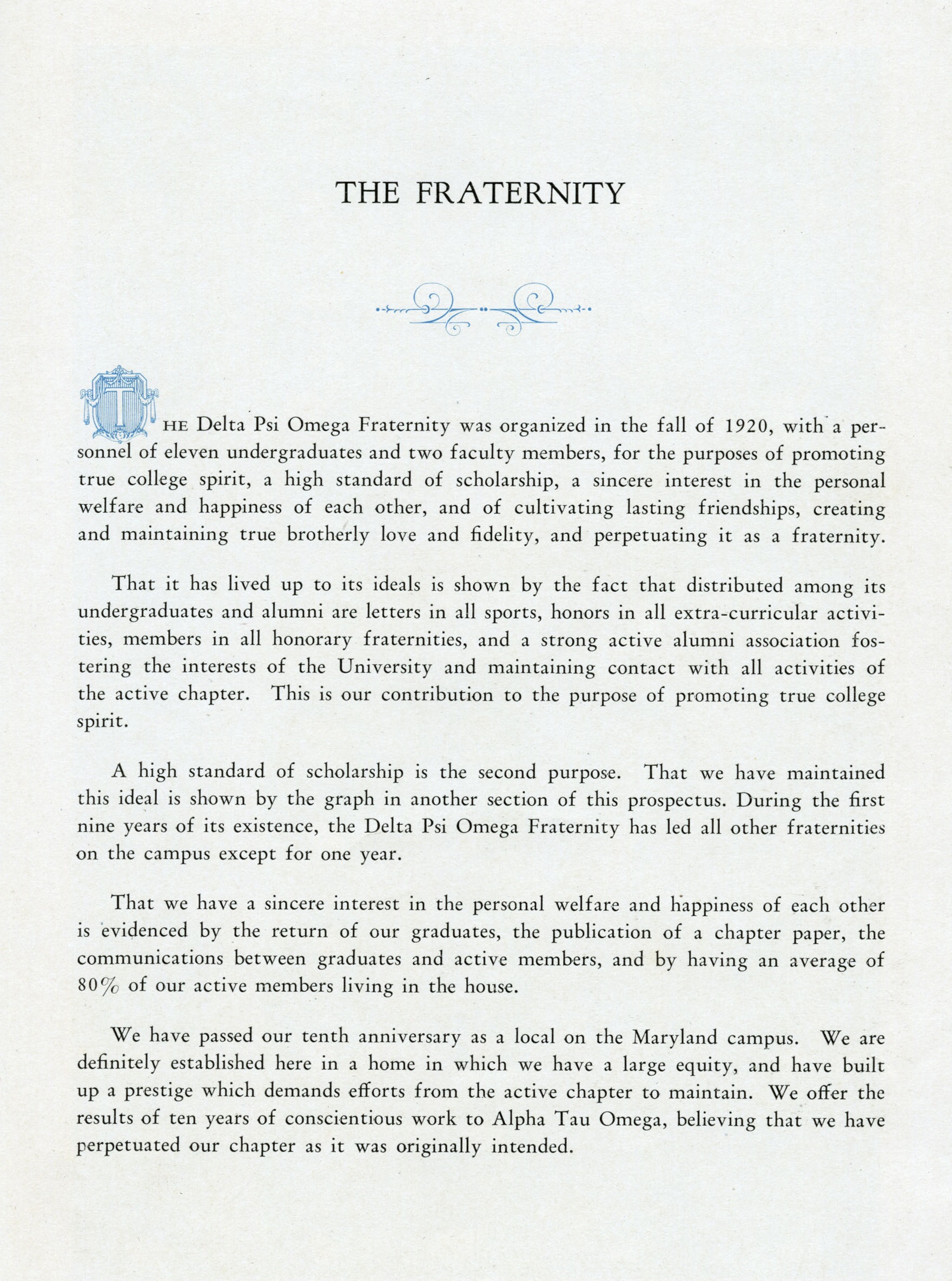 and serves as an example of how new fraternities are created. The cover of the petition states that it was authored by “Delta Psi Omega.” This was the local chapter that later became the Epsilon Gamma chapter of Alpha Tau Omega. Local chapters are small organizations that exist on one campus and have no national network or affiliations. Delta Psi Omega was created in 1920 with, as the petition tells us, the goals of “promoting true college spirit, a high standard of scholarship, a sincere interest in personal welfare and happiness of each other, and of cultivating lasting friendships, creating and maintaining true brotherly love and fidelity, and perpetuating it as a fraternity.” In 1930, the local chapter president, Harry Hasslinger, asked for partnership and union with Alpha Tau Omega, as their mission aligned most closely with that of the brothers of Delta Psi Omega.
and serves as an example of how new fraternities are created. The cover of the petition states that it was authored by “Delta Psi Omega.” This was the local chapter that later became the Epsilon Gamma chapter of Alpha Tau Omega. Local chapters are small organizations that exist on one campus and have no national network or affiliations. Delta Psi Omega was created in 1920 with, as the petition tells us, the goals of “promoting true college spirit, a high standard of scholarship, a sincere interest in personal welfare and happiness of each other, and of cultivating lasting friendships, creating and maintaining true brotherly love and fidelity, and perpetuating it as a fraternity.” In 1930, the local chapter president, Harry Hasslinger, asked for partnership and union with Alpha Tau Omega, as their mission aligned most closely with that of the brothers of Delta Psi Omega.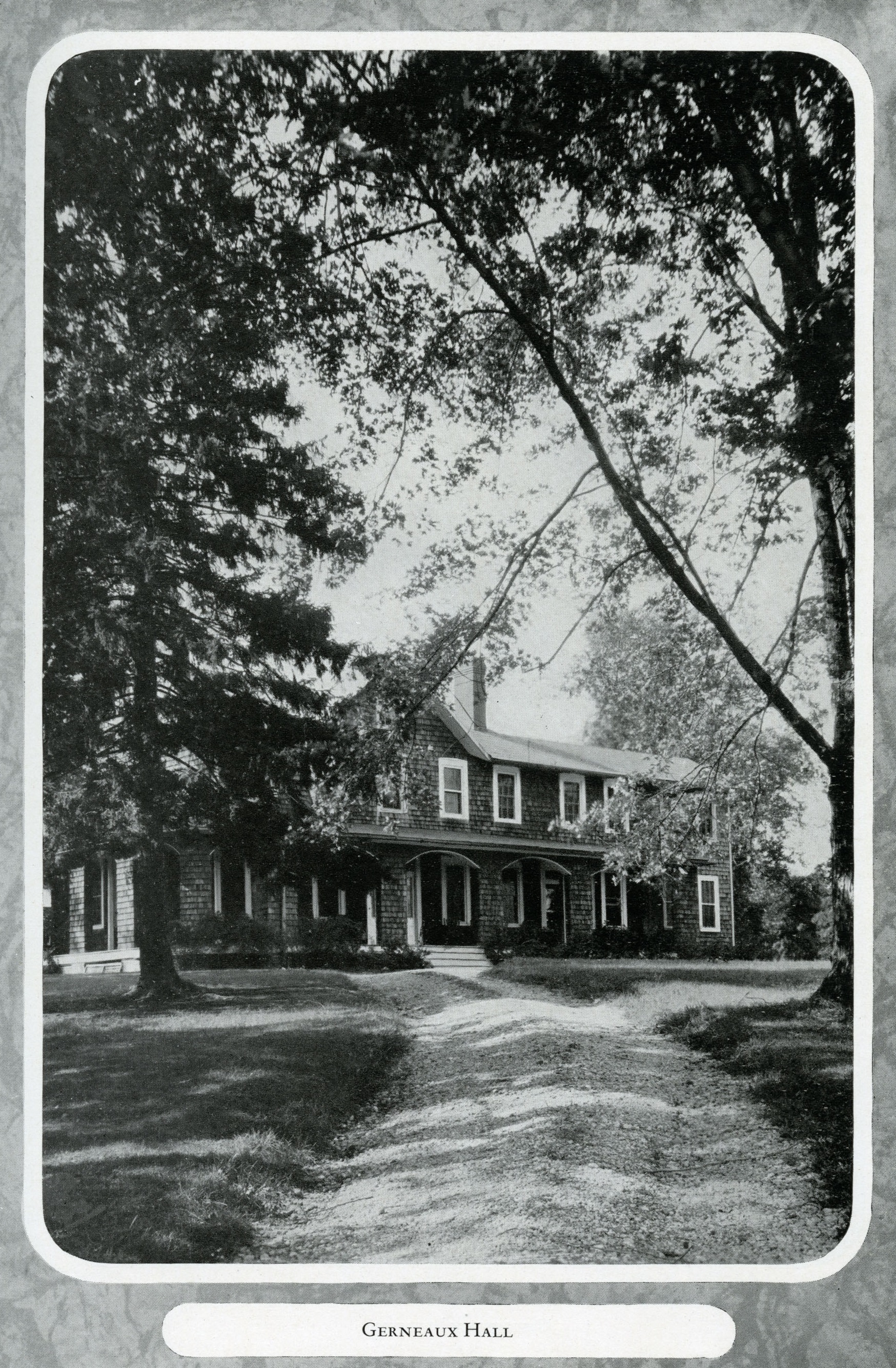


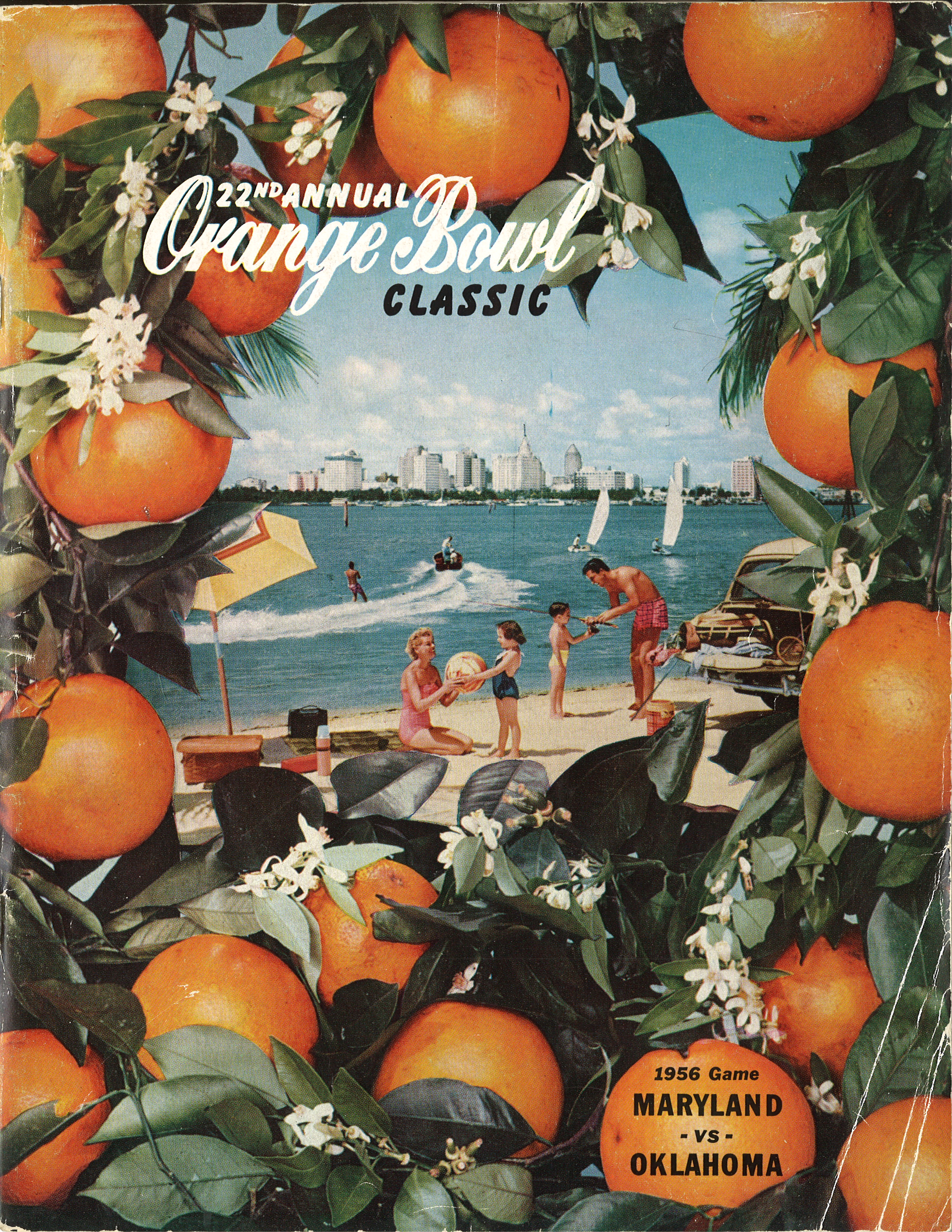 Mr. Weidemeyer’s gift complements the other materials the Archives has about this historic game, including the game day program and media relations file, a felt pennants, newspaper clippings, photographs, and footage from the game which you can view
Mr. Weidemeyer’s gift complements the other materials the Archives has about this historic game, including the game day program and media relations file, a felt pennants, newspaper clippings, photographs, and footage from the game which you can view 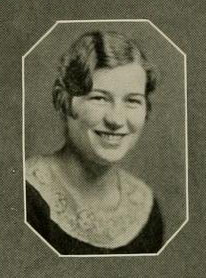 According to the diary of 1930’s coed, Ruth Finzel, recently donated to the University of Maryland Archives, the Aggies football team got a “dirty deal” in their loss to the Naval Academy Middies 86 years ago today at Washington’s Griffith Stadium.
According to the diary of 1930’s coed, Ruth Finzel, recently donated to the University of Maryland Archives, the Aggies football team got a “dirty deal” in their loss to the Naval Academy Middies 86 years ago today at Washington’s Griffith Stadium.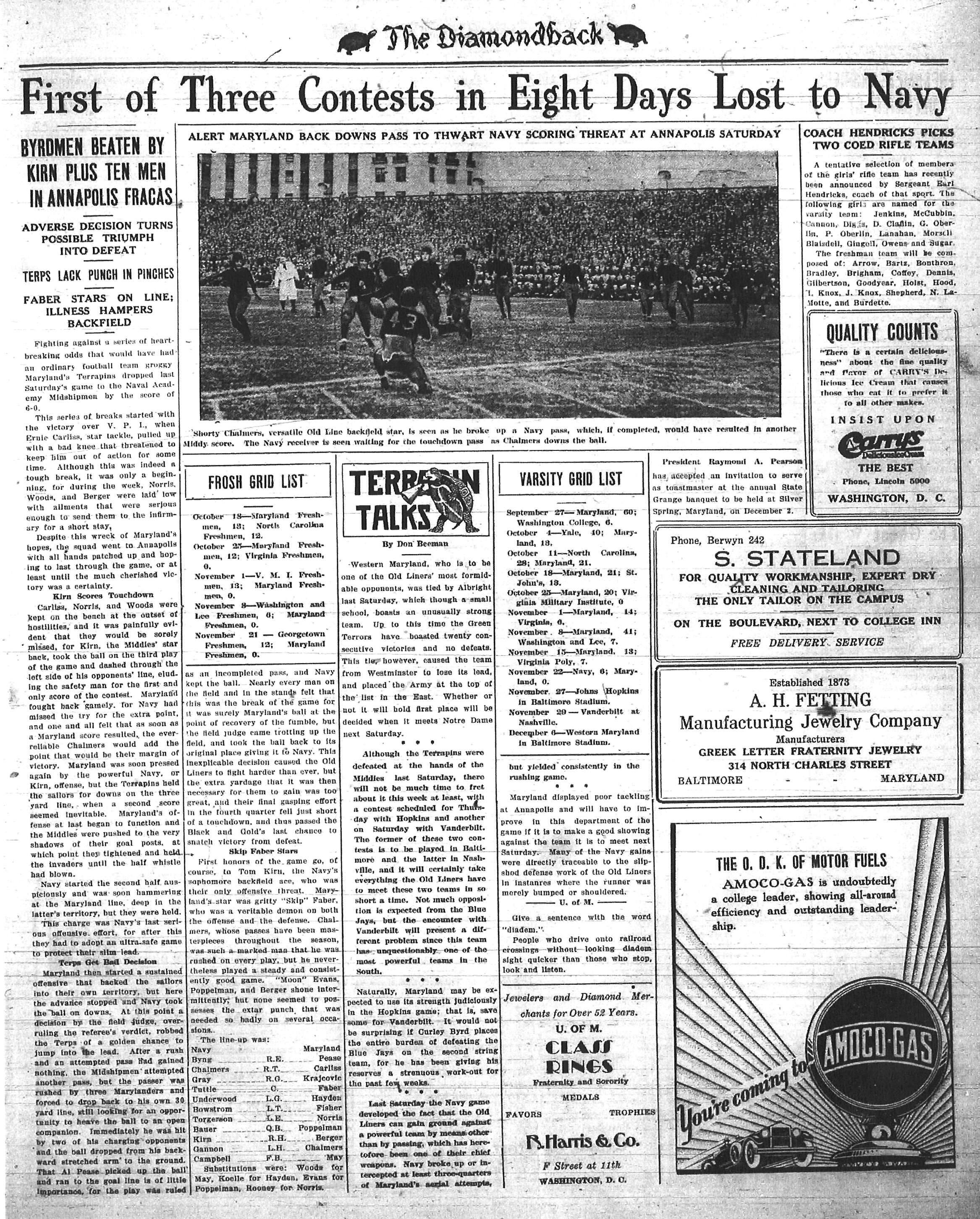
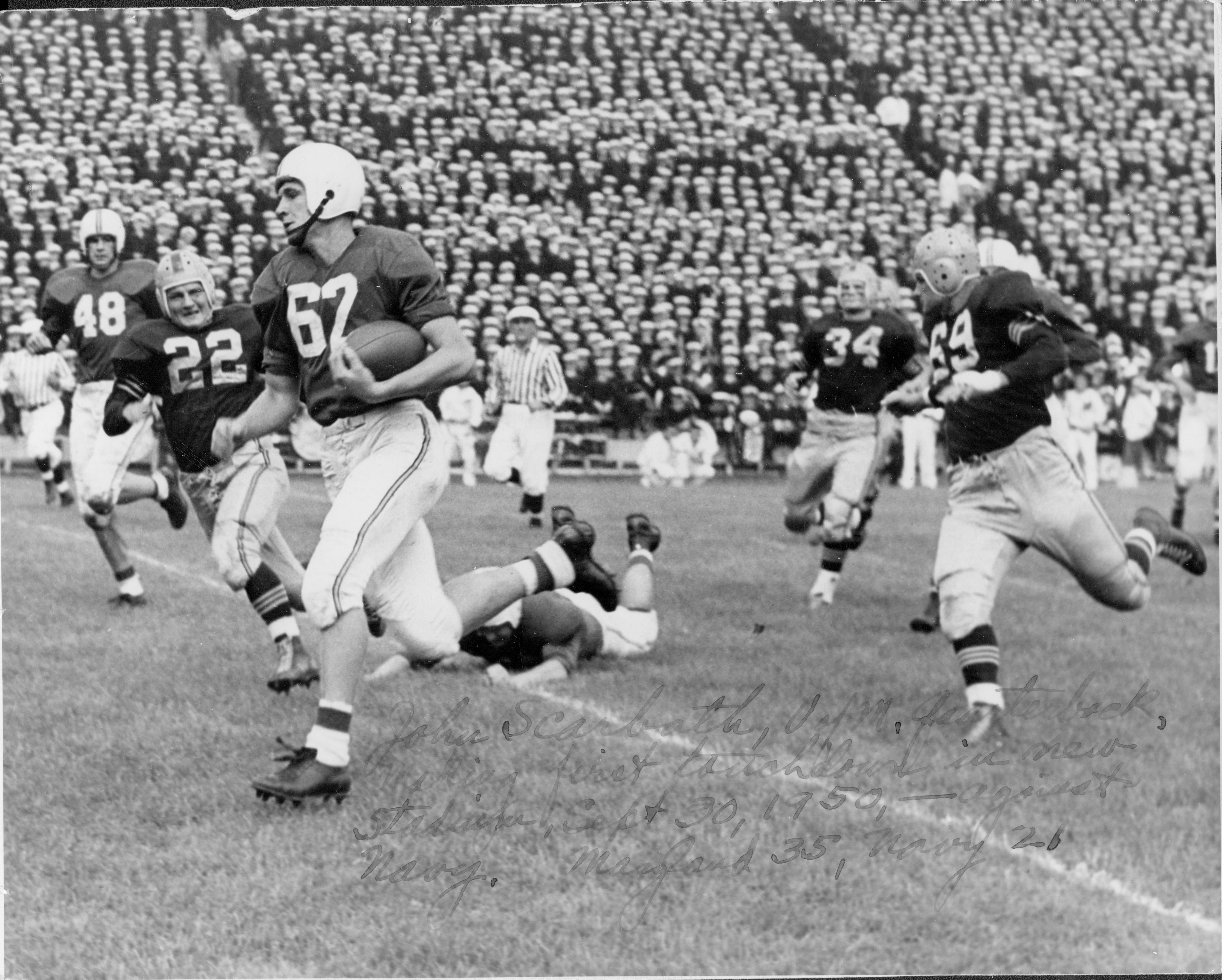
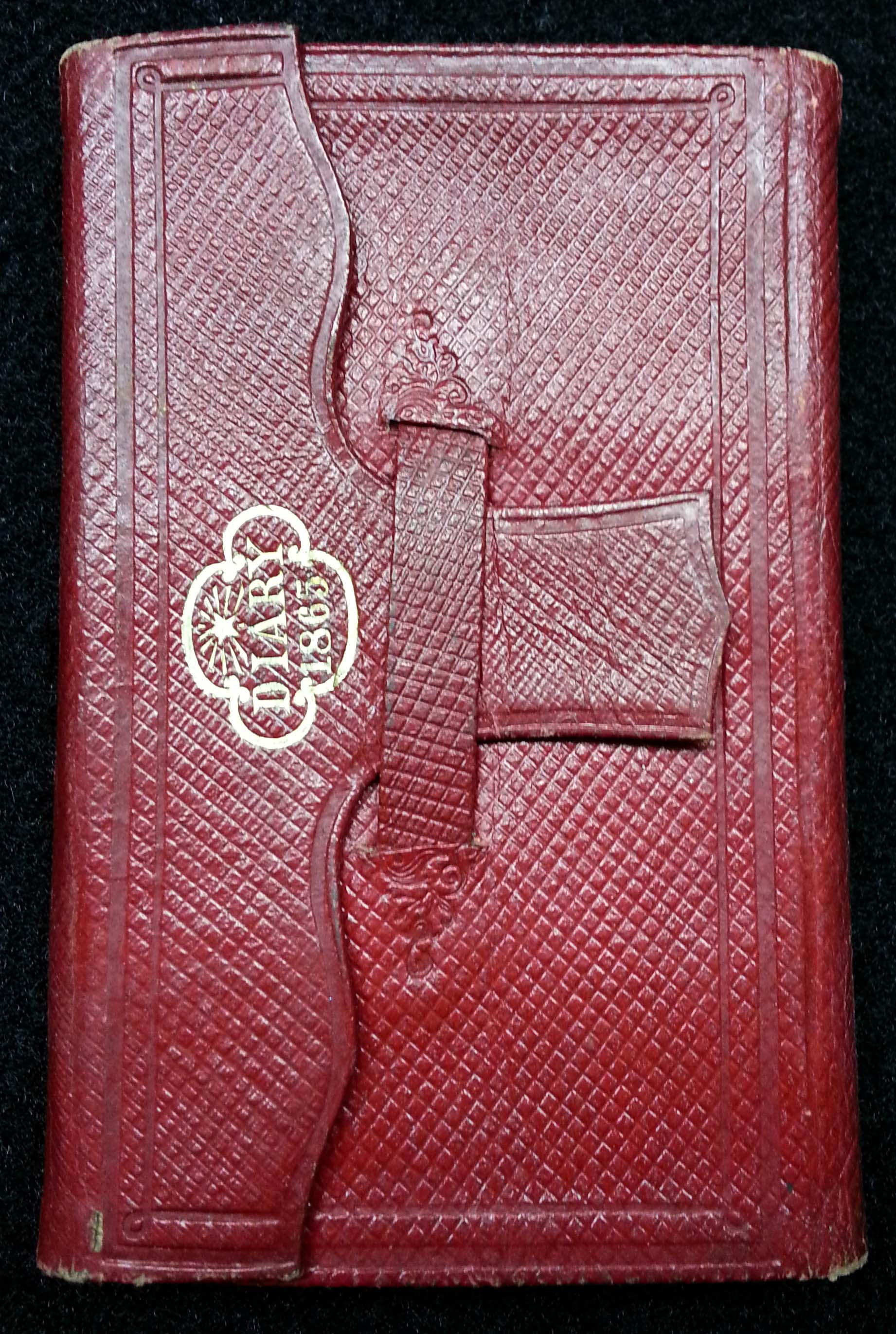 It’s only 2.25 inches wide and 3.5 inches tall, but the information this jewel contains is unique to the holdings of the University of Maryland Archives. The Archives recently purchased the 1865 diary of Maryland Agricultural College (MAC) cadet Charles Berry who enrolled in the college on September 12, 1864, at the age of 16. Berry’s journal is the oldest account of daily life at the MAC that the Archives possesses, so this was a very special acquisition.
It’s only 2.25 inches wide and 3.5 inches tall, but the information this jewel contains is unique to the holdings of the University of Maryland Archives. The Archives recently purchased the 1865 diary of Maryland Agricultural College (MAC) cadet Charles Berry who enrolled in the college on September 12, 1864, at the age of 16. Berry’s journal is the oldest account of daily life at the MAC that the Archives possesses, so this was a very special acquisition.
